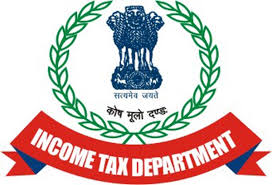
Official data released on Tuesday showed that demonetisation hasn’t pushed the economy into a retreat as most feared, with its short-term adverse impact to a large extent restricted to construction and financial services. Real GDP growth in the December quarter, in the midst of which the note ban came into effect, came in at a respectable 7% (though lower than 7.4% in the previous quarter) and the gross value added (GVA) was 6.6%, with the difference explained by robust indirect taxes and reining in of subsidies.
Upward revision of GVA estimates for 2015-16 led to downward corrections in GVA for Q1 and Q2 of the current fiscal but despite this, there were marginal upward revisions in the rates of GDP expansion in these quarters, thanks to a surge in indirect taxes.
Solid performance by the “agriculture and allied sectors”, pump-priming by the government on the consumption side, better-than-expected performance by mining and manufacturing sectors and a seasonal — though larger-than-usual — pick-up in private consumption masked whatever negative effect the note swap exercise had on the economy, going by the Central Statistics Office’s data.
However, as the GDP was slowing even before demonetisation and the note swap has indeed had an incremental adverse effect on it, both GDP and GVA growth for 2016-17 have been projected to be much lower than in the previous year. In the second advance estimate, the CSO has kept the GDP growth estimate for the current financial year at 7.1%, the same as in the first advance estimate released in early January, and GVA growth at 6.7%. But given that 2015-16 GDP growth, which was seen at 7.6% at the time of the first advance estimate, was subsequently revised to 7.9%, the CSO’s latest take on 2016-17 growth is virtually more sanguine than its previous estimate.
While the CSO’s GDP estimate for 2016-17 is evidently higher than that of most others, many analysts said the growth assumed by it for the second half (6.8%) was optimistic. “Given the fact that the fall from H1 to Q3 is not much, I don’t think that we should then necessarily assume that the rebound in Q4 is going to be very sharp,” said Aditi Nayar, economist at Icra. Stating that the GDP number is better than expected, Saugata Bhattacharya, chief economist at Axis Bank, said, “Since growth slowdown (due to demonetisation) has been shallower than expected, and in line with the RBI’s projections, the probability of rate cuts going ahead has come down.”
The minutes of the monetary policy committee’s meeting released last week indicated that it changed its stance from “accommodative” to “neutral” because the growth drag from demonetisation is expected to fade soon. India Ratings reiterated its view that “much of the impact of demonetisation will be visible in Q4FY17 leading to an overall GDP growth of 6.8% in 2016-17”.
Economic affairs secretary Shaktikanta Das said: “This year’s GDP (growth) is around 7%, based on available numbers. Nothing can be deciphered on anecdotal evidence. Demonetisation only impacted consumption in some cities, since most purchases happened on credit or debit cards. The so-called negative impact, if relevant, was only temporary.”
The 7% GDP growth forecast for the third quarter helped India maintain the coveted tag of the world’s fastest-growing major economy despite demonetisation, better than China’s 6.8% in the December quarter.
While analysts pointed out the lack of congruity between the CSO’s estimate and other high-frequency data and corporate results, chief statistician TCA Anant said all available data have been made use of in the second advance estimate, including corporate performance up to the December quarter, sales of commercial vehicles, railway freight, etc, for the first “9/10 months of the financial year”.
According to the CSO, with production growth of foodgrains during 2016-17 kharif and rabi seasons being 9.9% and 6.3%, respectively, the farm sector grew a robust 6% in Q3 from 3.8% in the previous quarter and compared with a 2.2% contraction in the year-ago quarter. Despite the anecdotes of industrial clusters hit by the note ban during the period, manufacturing grew a healthy 8.3% in Q3 on a robust base of 12.8% in the year-ago quarter and compared with 6.9% in Q2 this fiscal. Mining also posted a smart recovery from a fall of 1.3% in Q2 to a robust expansion of 7.5% in Q3. The bad performers on the output side was “financial services, etc”, which posted a modest 3.1% growth in Q3 compared with 7.6% in the previous month, and construction which grew just 2.7% in the December quarter.
Government final consumption expenditure (GFCE) posted a 19.9% growth in Q3 against 15.2% in the previous quarter, the CSO said. Given that 17% growth in GFCE is estimated for the whole of 2016-17, it needs to grow at 17.4% in Q4. Considering that the Centre, as is seen from the April-January fiscal data separately released by the Controller General of Accounts, has slowed down spending in the later months of the year, the spending boost must come from PSUs.
Although both Dussehra and Diwali fell in the December quarter, the 10.1% growth reported by CSO in the private consumption expenditure looked puzzling to most analysts (but some said use of old notes for consumption might have contributed to the rise). So was the 3.5% growth in gross fixed capital formation, which was declining for the previous three quarters.
Given that nominal GDP growth has been projected at 11.5% for 2016-17, compared with 10% in the last fiscal, it may offer more leeway to the government to improve spending in the next fiscal and yet contain fiscal deficit, which is expressed as a ratio of the nominal GDP, at the targeted 3.2%.
Discrepancies — the difference between the supply and demand side of GDP — turned negative after a gap of four quarters (-Rs 6,767 crore) in the December quarter, compared with Rs 45,378 crore in the second quarter and Rs 30,645 crore in the first quarter. In the last quarter of 2015-16, discrepancies touched a massive Rs 1,43,210 crore, causing a flutter then and raising doubts about the credibility of the country’s data collection mechanism. When private final consumption expenditure, gross fixed capital formation, government final consumption expenditure, change in stocks, valuables, and net exports exceed the overall GDP (based on the supply side data), discrepancies turn negative.
Analysts expect the exports sector to contribute more to GDP growth in the coming quarters, despite the demonetisation blues, thanks primarily to a favourable base. In real terms, the export growth for 2016-17 has been projected at 2.3%, compared with -5.4% in the last fiscal. Despite demonetisation, merchandise exports rose 2.3% in November, 5.7% in December and 4.3% in January.





